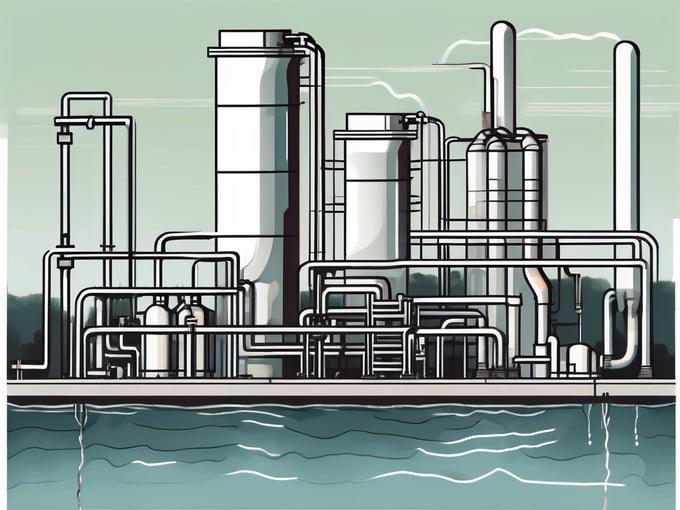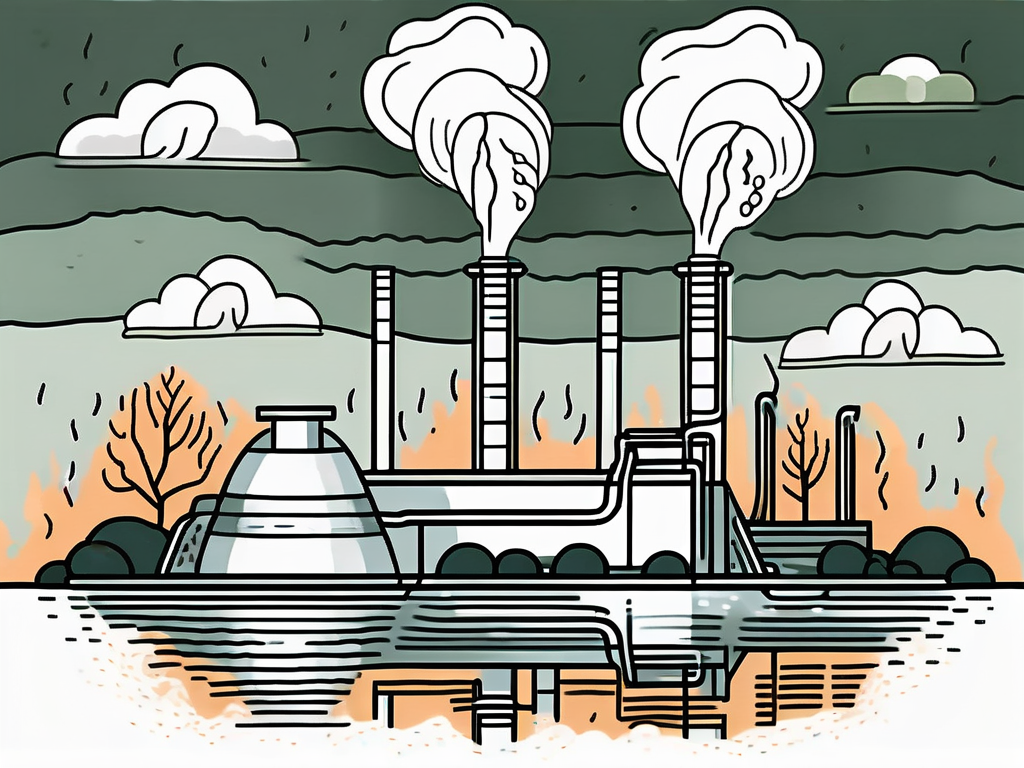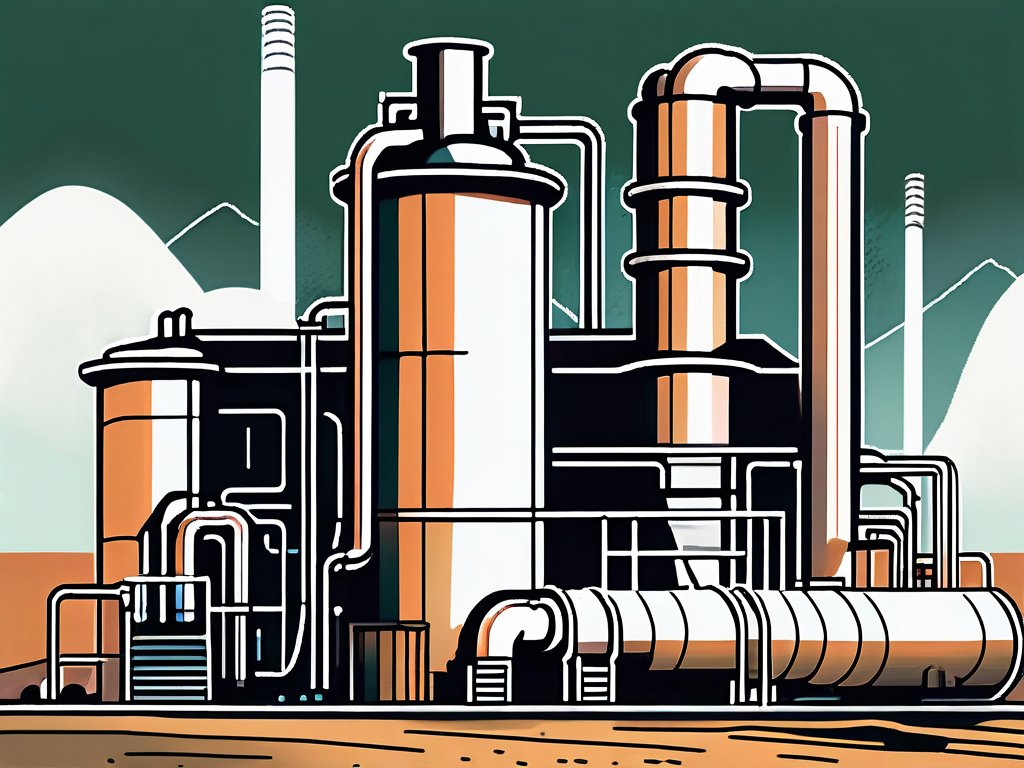
Sludge Incineration: Wastewater Treatment Explained
Sludge incineration is a critical process in the treatment of wastewater. It involves the combustion of organic matter present in sludge, which is a byproduct of wastewater treatment. This process is crucial for reducing the volume of sludge, eliminating pathogens, and recovering energy. This glossary article will delve into the intricate details of sludge incineration, its role in wastewater treatment, and the various technologies involved.
Understanding sludge incineration requires a comprehensive knowledge of wastewater treatment processes, the nature and composition of sludge, the principles of incineration, and the environmental and health impacts of sludge incineration. This article will provide an in-depth exploration of these topics, providing a comprehensive understanding of sludge incineration in the context of wastewater treatment.
Understanding Wastewater Treatment
Wastewater treatment is a complex process aimed at removing contaminants from wastewater to produce an effluent that can be safely returned to the environment, or reused for various purposes. The process involves physical, chemical, and biological methods to remove pollutants such as solids, organic matter, and pathogens. The ultimate goal is to protect public health and the environment.
The treatment process typically involves three stages: primary, secondary, and tertiary treatment. Primary treatment involves the removal of large solids and grit. Secondary treatment involves biological processes to remove dissolved and suspended organic matter. Tertiary treatment involves the removal of nutrients and other remaining pollutants to produce high-quality effluent.
Role of Sludge in Wastewater Treatment
Sludge is a byproduct of wastewater treatment. It is a semi-solid material that results from the physical, chemical, and biological treatment processes. Sludge contains a high proportion of organic matter, including human waste, food scraps, oils, and soaps, as well as various inorganic materials.
Sludge treatment is an integral part of wastewater treatment. The goal is to reduce the volume of sludge, eliminate pathogens, and make it suitable for disposal or reuse. Sludge treatment processes include thickening, digestion, dewatering, and incineration.
Principles of Sludge Incineration
Sludge incineration involves the combustion of organic matter in sludge. The process takes place in a furnace or incinerator at high temperatures, typically between 800 and 1,200 degrees Celsius. The combustion process reduces the volume of sludge, destroys pathogens, and converts the organic matter into ash, water vapor, and gases.
The incineration process involves three stages: drying, combustion, and cooling. Drying involves the removal of moisture from the sludge. Combustion involves the oxidation of the dried sludge, resulting in the production of ash, water vapor, and gases. Cooling involves the reduction of the temperature of the combustion products to prevent damage to the incinerator and pollution control equipment.
Types of Incinerators
There are several types of incinerators used for sludge incineration. These include multiple hearth furnaces, fluidized bed incinerators, and rotary kiln incinerators. The choice of incinerator depends on various factors such as the quantity and characteristics of the sludge, the desired level of energy recovery, and the applicable regulations.
Multiple hearth furnaces consist of several hearths or levels, with the sludge being moved from the top to the bottom. Fluidized bed incinerators involve the suspension of the sludge in a bed of hot sand or other material. Rotary kiln incinerators involve the rotation of the furnace to mix the sludge with the combustion air.
Environmental and Health Impacts of Sludge Incineration
While sludge incineration plays a crucial role in wastewater treatment, it also has potential environmental and health impacts. These impacts are primarily associated with the emissions from the incineration process, which include particulate matter, heavy metals, dioxins, and furans.

Particulate matter can affect air quality and human health, causing respiratory problems and other health issues. Heavy metals can accumulate in the environment and pose risks to human health and ecosystems. Dioxins and furans are toxic compounds that can cause cancer and other health problems. Therefore, it is essential to control and monitor the emissions from sludge incineration.
Emission Control in Sludge Incineration
Emission control in sludge incineration involves the use of various technologies to capture and remove pollutants from the combustion gases. These technologies include electrostatic precipitators, fabric filters, and scrubbers. Electrostatic precipitators use electric fields to capture particulate matter. Fabric filters use a fabric medium to capture particles. Scrubbers use a liquid to capture and remove pollutants.
Additionally, advanced technologies such as selective catalytic reduction and activated carbon injection are used to control nitrogen oxides and dioxins, respectively. These technologies are critical for ensuring compliance with environmental regulations and protecting public health and the environment.
Energy Recovery from Sludge Incineration
Sludge incineration can also provide a source of energy. The combustion of organic matter in sludge releases heat, which can be recovered and used for various purposes such as heating buildings, producing steam, or generating electricity. This energy recovery can offset the energy consumption of the wastewater treatment plant and reduce the reliance on fossil fuels.

Energy recovery technologies include heat exchangers, steam turbines, and combined heat and power systems. Heat exchangers capture the heat from the combustion gases and transfer it to a fluid. Steam turbines use the heat to produce steam, which drives a turbine to generate electricity. Combined heat and power systems use the heat for both heating and electricity generation.
Challenges and Opportunities in Energy Recovery
While energy recovery from sludge incineration offers significant benefits, it also presents challenges. These challenges include the variability in the energy content of the sludge, the need for sophisticated equipment and controls, and the investment costs. However, with advances in technology and the increasing focus on renewable energy and resource recovery, the opportunities for energy recovery from sludge incineration are expected to grow.
Furthermore, energy recovery from sludge incineration can contribute to the sustainability of wastewater treatment. By converting a waste product into a valuable resource, it can help to reduce the environmental footprint of wastewater treatment and promote a circular economy.
Future Directions in Sludge Incineration
As the demand for effective and sustainable wastewater treatment continues to grow, so does the importance of sludge incineration. Future directions in sludge incineration include the development of more efficient and cleaner incineration technologies, the integration of incineration with other sludge treatment processes, and the exploration of new opportunities for energy recovery.
Research and development efforts are also focusing on the reduction of emissions from sludge incineration, the recovery of nutrients from the ash, and the use of advanced control systems for optimizing the incineration process. These efforts are expected to enhance the performance and sustainability of sludge incineration in the context of wastewater treatment.
Conclusion
Sludge incineration is a critical component of wastewater treatment, playing a key role in sludge management and energy recovery. While it presents challenges in terms of environmental and health impacts, advances in technology and practices are helping to mitigate these impacts and enhance the benefits of the process.
As our understanding of sludge incineration continues to evolve, it is clear that this process will remain an essential part of our efforts to manage wastewater, protect public health, and safeguard the environment. By continuing to explore and implement innovative solutions, we can ensure that sludge incineration contributes positively to the sustainability of our water resources.



